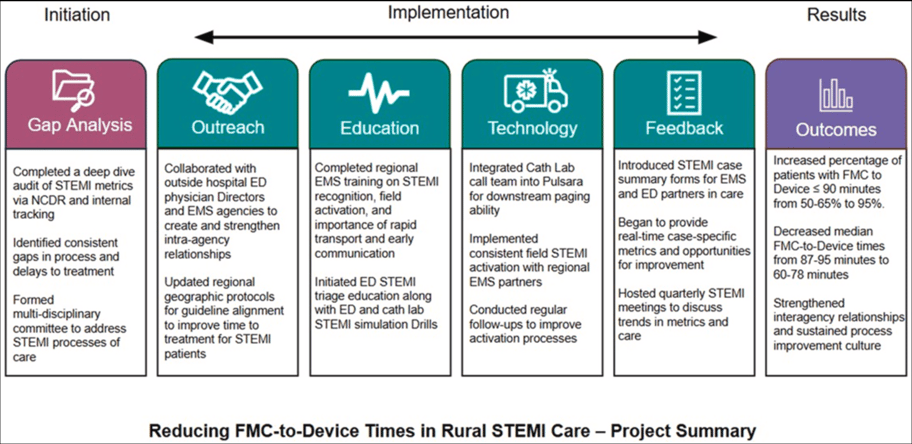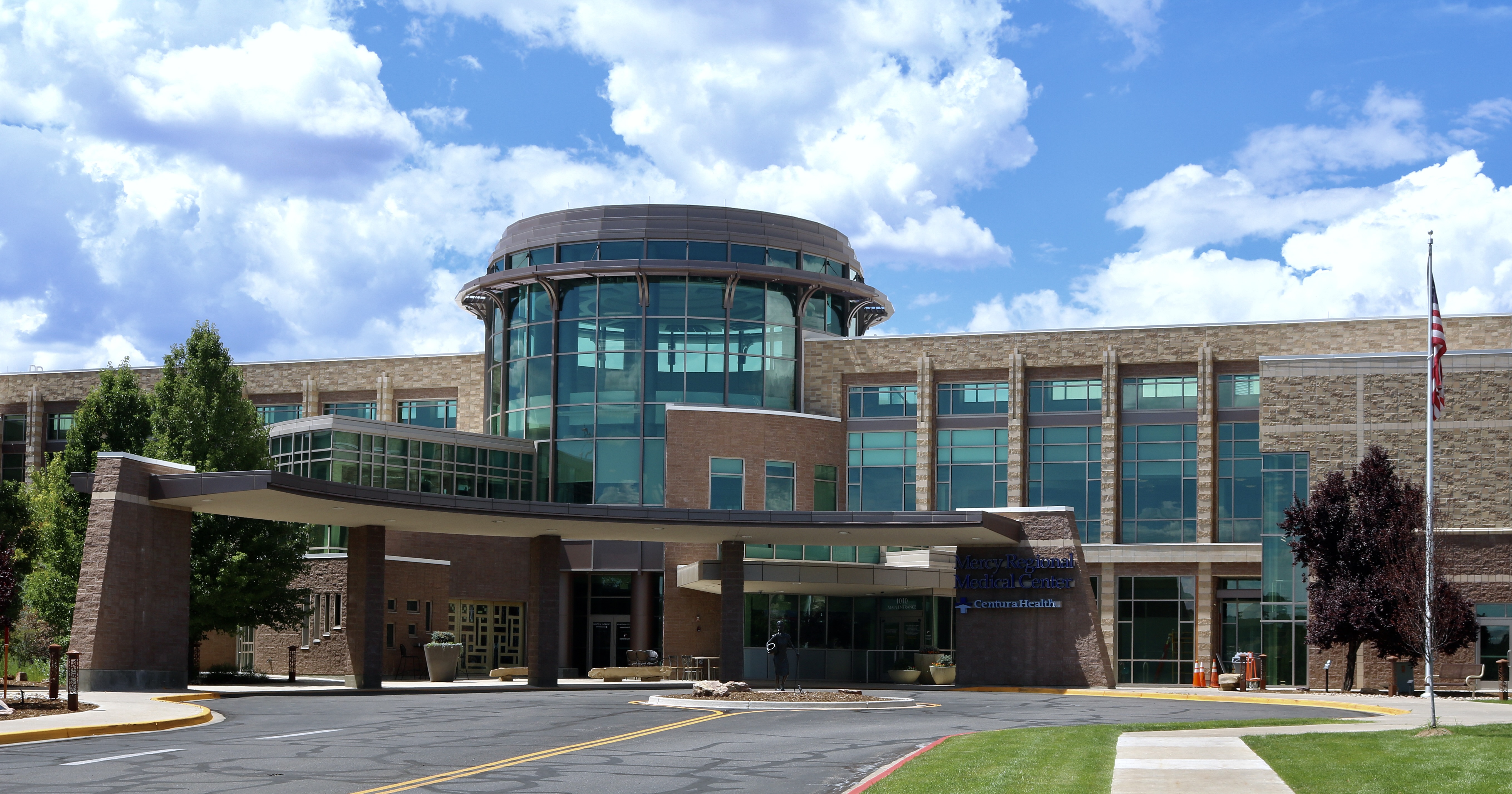A new research study, published in The Journal of the American College of Cardiology (JACC), shows the use of Pulsara in a STEMI-focused initiative reduced first medical contact-to-treatment times by as much as 31% for a rural Colorado Hospital.
The quality improvement project from CommonSpirit Mercy Hospital in Durango, Colorado, demonstrates how streamlined communication and standardized field activation—powered in part by the Pulsara platform—can significantly reduce STEMI treatment times in rural settings.
The rural mountain hospital had long faced challenges common to remote regions: long transport distances, unpredictable weather, limited local resources, and no prehospital STEMI activation process. In 2024, 60% of their first medical contact–to-device (FMC-to-device) times exceeded the guideline-recommended 90-minute threshold, averaging 111 minutes.
To address this, the hospital launched a multidisciplinary, multiagency improvement initiative involving ED clinicians, interventional cardiologists, cath lab teams, EMS physician directors, and five regional EMS agencies. A key component of the project was implementing the Pulsara communication platform to support early STEMI recognition and real-time team activation.
What They Did
- Introduced standardized field STEMI activation protocols across EMS agencies
- Delivered targeted education, outreach, and simulations for EMS and ED teams
- Implemented the Pulsara platform for secure, real-time, time-stamped alerts, and communication
- Streamlined review and decision-making so EMS and ED teams could activate the cath lab within minutes
- Provided rapid feedback using standardized case summaries to keep partners aligned and engaged

With Pulsara, EMS could transmit ECGs and patient information in real-time, allowing ED physicians and interventional cardiologists to review cases within two minutes and activate the cath lab directly from the platform.
The Results
After launching the new processes in February 2025, the hospital saw dramatic improvements:
- 95% of STEMI patients achieved FMC-to-device times of ≤90 minutes (up from 50–66.7% in 2024)
- Median FMC-to-device times dropped to 60–78 minutes (down from 87–95 minutes in 2024)
These gains demonstrate that even in geographically challenging regions, coordinated communication and streamlined activation can eliminate avoidable delays and save more heart muscle.
Why It Matters
Rural hospitals often face barriers that make guideline-directed STEMI timelines feel out of reach. This published research study shows that with authentic collaboration, standardized processes, and real-time communication technology, rural teams can meaningfully improve outcomes even in the most challenging environments.
Read the full research study published in JACC:

To learn more about how CommonSpirit Mercy Hospital is transforming rural STEMI care with Pulsara, check out this AHA podcast interview with CommonSpirit Mercy CEO, Josh Neff.
 Max Landon
Max Landon


![[PRESS RELEASE] Published Research Finds Up to 31% Faster STEMI Treatment Times in Rural Hospital Setting with Pulsara](https://www.pulsara.com/hubfs/_1_website-page-blog-assets/pulsara-hosp-teams-assign-cardio-stemi-rn-1200x701.jpg)
